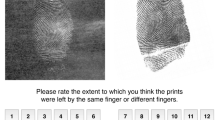Abstract
Existing architectures used in face anti-spoofing tend to deploy registered spatial measurements to generate feature vectors for spoof detection. This means that the ordering or sequence in which specific statistics are computed cannot be changed, as one moves from one facial profile to another. While this arrangement works in a person-specific setting, it becomes a major drawback when single-sided training is done based on the natural face class alone. To mitigate subject identity linked content interference within the anti-spoofing frame, we propose a identity-independent architecture based on random correlated scans of natural face images. The same natural face image can be scanned multiple times through independent correlated random walks before deriving simple differential features on the 1D scanned vectors. This proposed frame tends to capture the pixel correlation statistics with minimal content interference and shows great promise, particularly when trained on natural face sets, using a one-class support vector machine and cross-validated on other databases. Performance measured in terms of EER for detection of spoof face is found to be \(3.8291\%\) with proposed random scan features, and \(2.02\%\) with auto-population samples for inter database.












Similar content being viewed by others
References
Arashloo SR, Kittler J, Christmas W (2017) An anomaly detection approach to face spoofing detection: a new formulation and evaluation protocol. IEEE Access 5:13868–13882
Boulkenafet Z, Komulainen J, Hadid A (2016) Face spoofing detection using colour texture analysis. IEEE Trans Inf Forensics Secur 11(8):1818–1830
Chang CC, Lin CJ (2011) LIBSVM: a library for support vector machines. ACM Trans Intell Syst Technol TIST 2(3):27
Erdogmus N, Marcel S (2013) Spoofing in 2D face recognition with 3D masks and anti-spoofing with kinect. In: 2013 IEEE sixth international conference on biometrics: theory, applications and systems (BTAS), pp 1–6. IEEE, USA
Galbally J, Marcel S (2014) Face anti-spoofing based on general image quality assessment. In: 2014 22nd international conference on pattern recognition, pp 1173–1178. IEEE, Sweden
Galbally J, Marcel S, Fierrez J (2014) Biometric antispoofing methods: a survey in face recognition. IEEE Access 2:1530–1552
Galbally J, Marcel S, Fierrez J (2014) Image quality assessment for fake biometric detection: application to iris, fingerprint, and face recognition. IEEE Trans Image Process 23(2):710–724
Garcia DC, de Queiroz RL (2015) Face-spoofing 2D-detection based on moiré-pattern analysis. IEEE Trans Inf Forensics Secur 10(4):778–786
Ji Z, Zhu H, Wang Q (2016) LFHOG: a discriminative descriptor for live face detection from light field image. In: 2016 IEEE international conference on image processing (ICIP), pp 1474–1478. IEEE, Phoenix
Jourabloo A, Liu Y, Liu X (2018) Face de-spoofing: anti-spoofing via noise modeling. In: Proceedings of the European conference on computer vision (ECCV), pp 290–306. Munich, Germany
Karthik K, Kashyap S (2013) Transparent hashing in the encrypted domain for privacy preserving image retrieval. Signal Image Video Process 7(4):647–664
Karthik K, Katika BR (2017) Face anti-spoofing based on sharpness profiles. In: 2017 IEEE international conference on industrial and information systems (ICIIS), pp 1–6. IEEE, Srilanka
Karthik K, Katika BR (2017) Image quality assessment based outlier detection for face anti-spoofing. In: 2017 2nd international conference on communication systems, computing and IT applications (CSCITA), pp 72–77. IEEE, Mumbai
Karthik K, Katika BR (2019) Identity independent face anti-spoofing based on random scan patterns. In: 2019 8th PREMI international conference on pattern recognition and machine intelligence (PREMI). Springer, Berlin
Matias Y, Shamir A (1987) A video scrambling technique based on space filling curves. In: Conference on the theory and application of cryptographic techniques, pp 398–417. Springer, London
Minaee S, Abdolrashidi A (2018) Finger-gan: generating realistic fingerprint images using connectivity imposed GAN. CoRR arXiv:abs/1812.10482. http://arxiv.org/abs/1812.10482
Patel K, Han H, Jain AK (2016) Secure face unlock: spoof detection on smartphones. IEEE Trans Inf Forensics Secur 11(10):2268–2283
Sepas-Moghaddam A, Malhadas L, Correia PL, Pereira F (2017) Face spoofing detection using a light field imaging framework. IET Biom 7(1):39–48
Wen D, Han H, Jain AK (2015) Face spoof detection with image distortion analysis. IEEE Trans Inf Forensics Secur 10(4):746–761
Yang J, Lei Z, Yi D, Li SZ (2015) Person-specific face antispoofing with subject domain adaptation. IEEE Trans Inf Forensics Secur 10(4):797–809
Zhang Z, Yan J, Liu S, Lei Z, Yi D, Li SZ (2012) A face antispoofing database with diverse attacks. In: 2012 5th IAPR international conference on Biometrics (ICB), pp 26–31. IEEE, USA
Author information
Authors and Affiliations
Corresponding author
Additional information
Publisher's Note
Springer Nature remains neutral with regard to jurisdictional claims in published maps and institutional affiliations.
Rights and permissions
About this article
Cite this article
Katika, B.R., Karthik, K. Face anti-spoofing by identity masking using random walk patterns and outlier detection. Pattern Anal Applic 23, 1735–1754 (2020). https://doi.org/10.1007/s10044-020-00875-8
Received:
Accepted:
Published:
Issue Date:
DOI: https://doi.org/10.1007/s10044-020-00875-8




